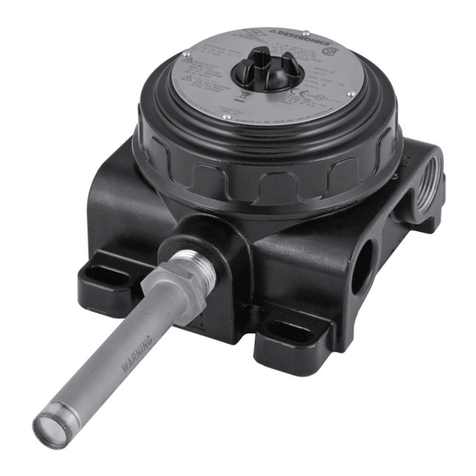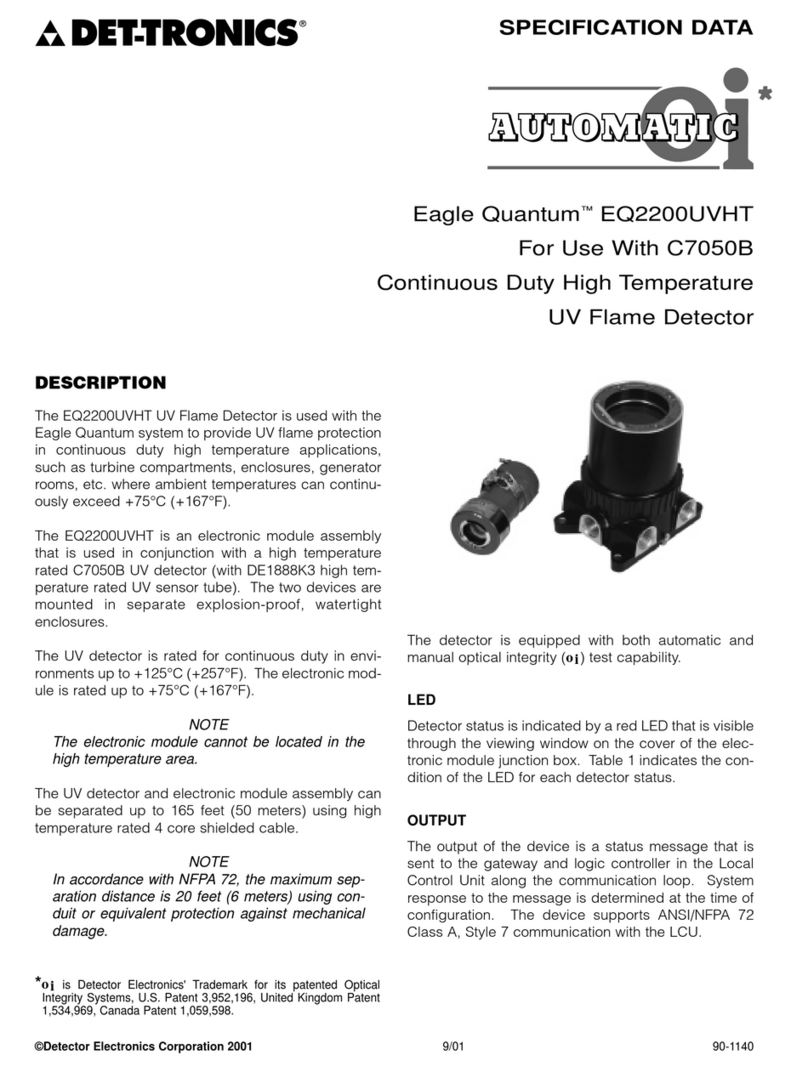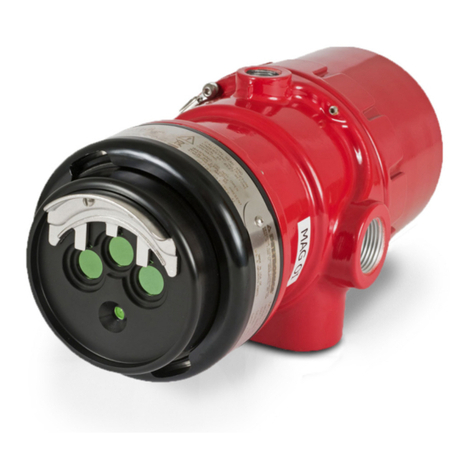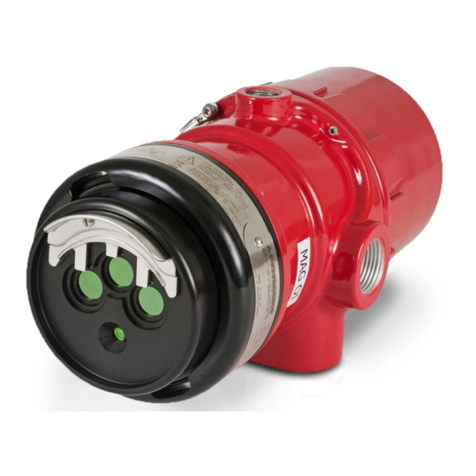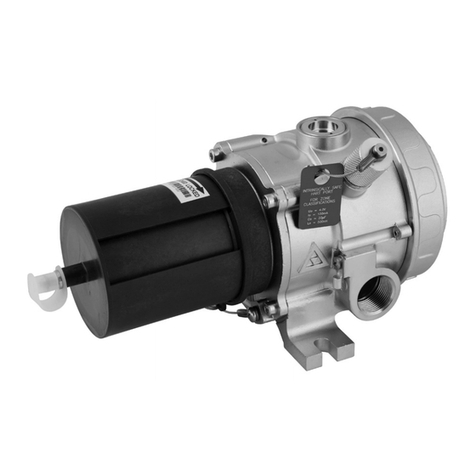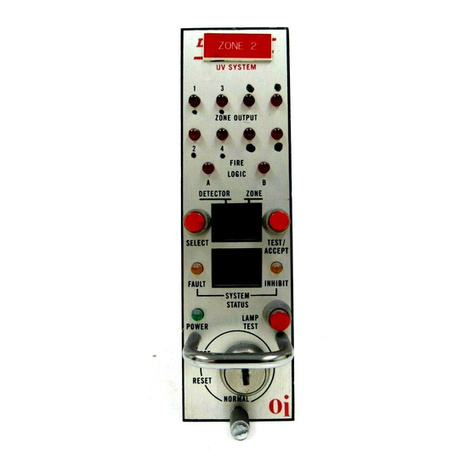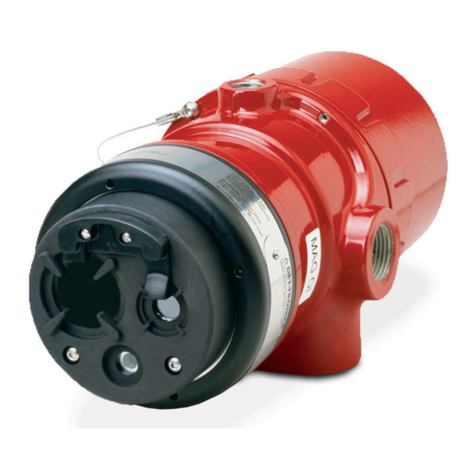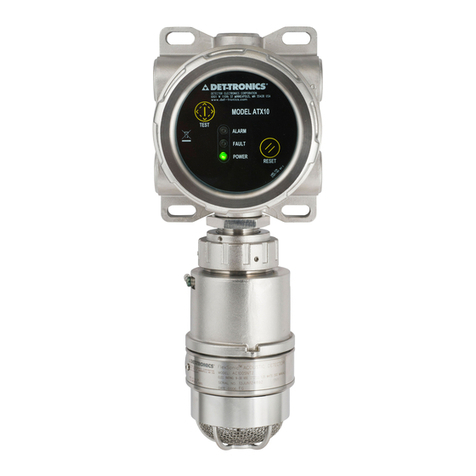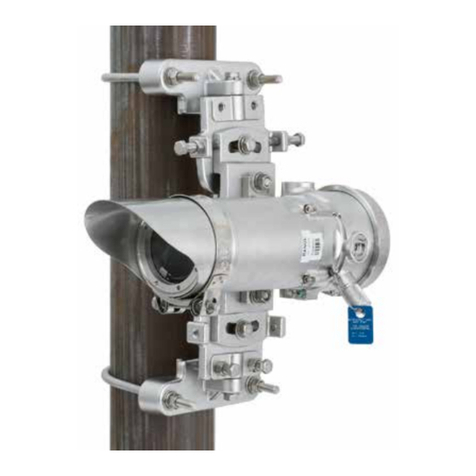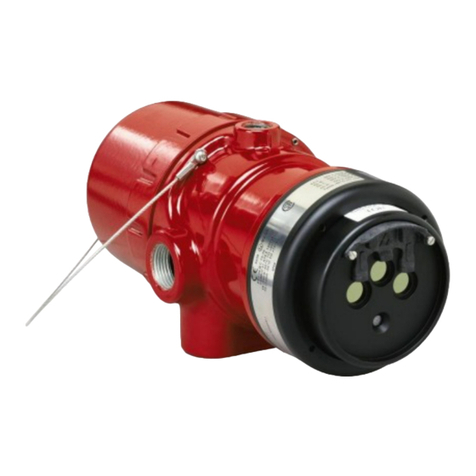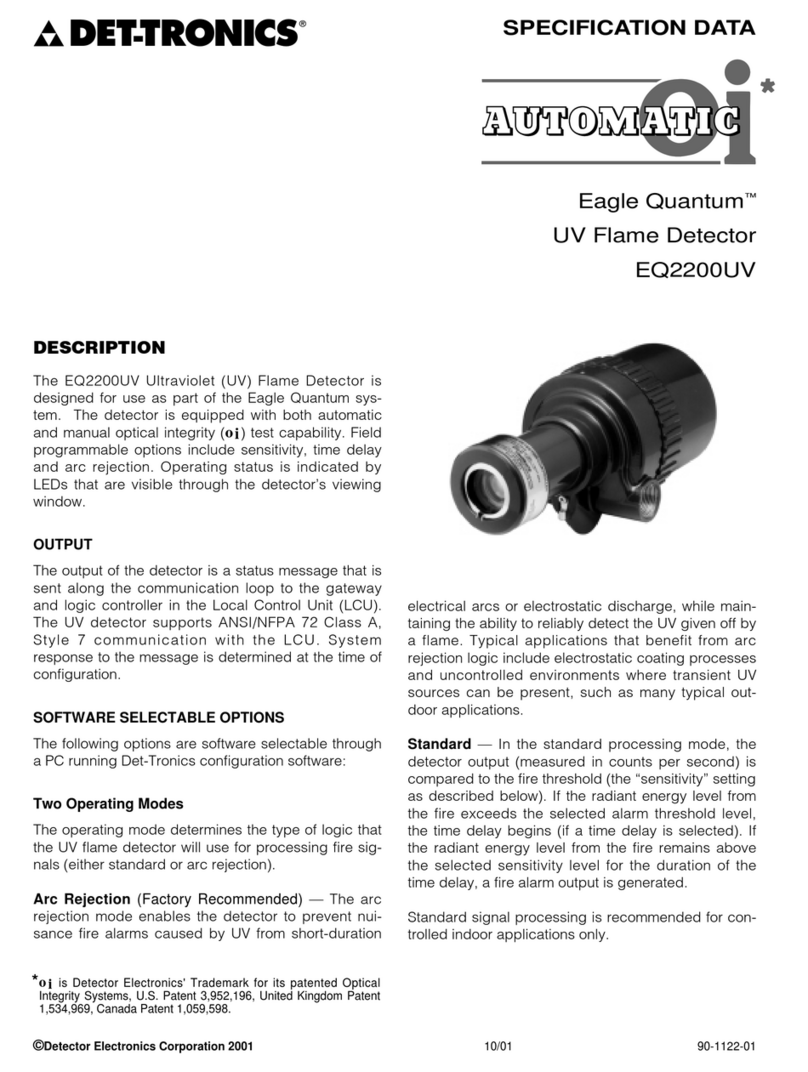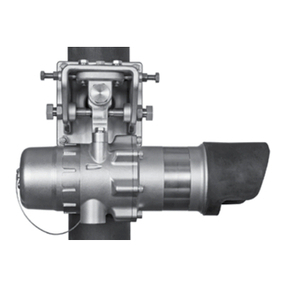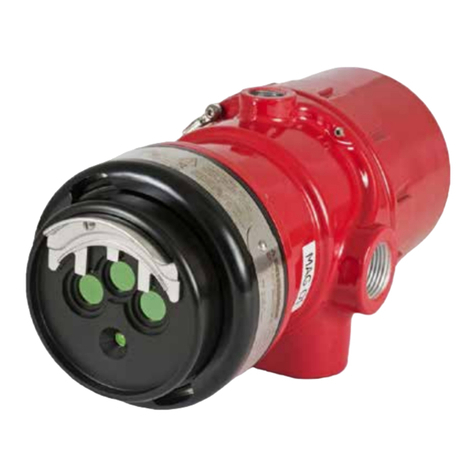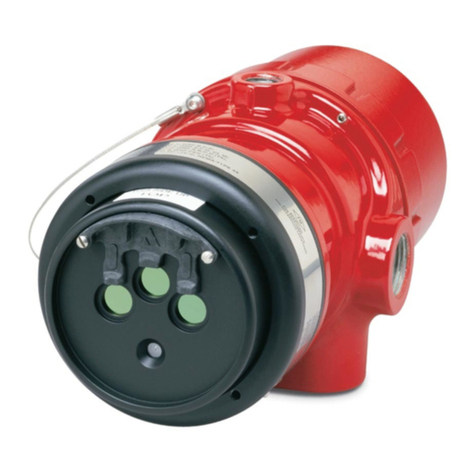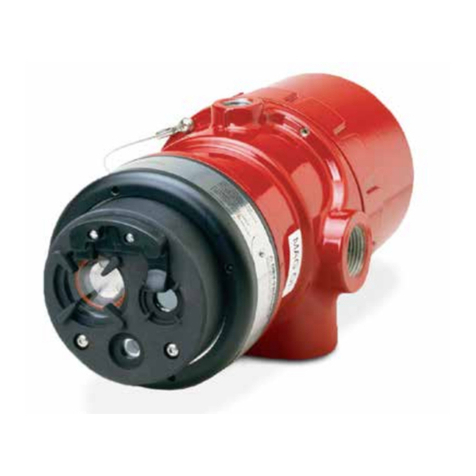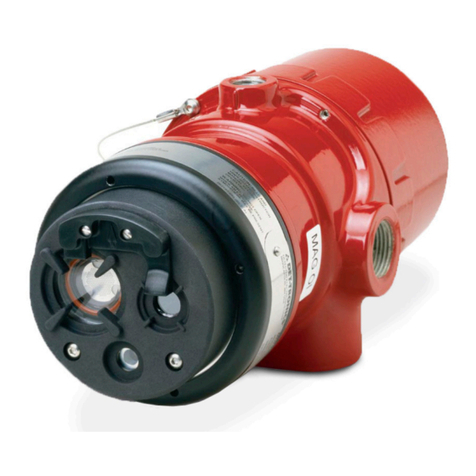
395-854919.1
Magnetic
oi
/ Manual
oi
The detector also incorporates both Magnetic oi(Mag
oi) and Manual oi(Man oi) features that provide the
same calibrated test as the Automatic oi, and in addition
actuates the Alarm output to verify operation for preventive
maintenance requirements. These features can be
performed at any time and eliminate the need for testing
with a non-calibrated external test lamp.
CAUTION
These tests require disabling of all extinguishing
devices to avoid release resulting from a successful
test.
The Mag oitest is performed by placing a magnet at the
location marked "MAG OI" on the outside of the detector (see
Figure 2). The Man oitest is accomplished by connecting
the oilead (terminal 22) to power supply minus via an
external switch. The magnet or switch must be held in place
for a minimum of 6 seconds to complete the test. Either of
these test methods activates the calibrated UV emitter. If
the resulting signal meets the test criteria, indicating that
greater than half of the detection range remains, the fire
alarm output of the detector is activated. On models with
relay, 0–20 mA, or HART outputs, this condition remains until
the magnet is removed or the switch is released, regardless
of whether the detector has been configured for latching or
non-latching operation.
If less than half of the detection range remains, no alarm is
produced and a fault is generated. The fault indication can
be reset by momentarily applying the Mag oior Man oi
switch. In this case, the detector's optics should be cleaned
and the oitests should be repeated. See the "Cleaning
Procedure" section of this manual for details. The fire alarm
output condition stays active for three seconds on Eagle
Quantum Premier models.
NOTE
Refer to Appendix A for FM verication of the
oi
function.
COMMUNICATION
The detector is furnished with an RS-485 interface for
communicating status and other information with external
devices. The RS-485 supports Modbus protocol, with the
detector configured as a slave device.
For HART communication, connect a HART communicator
across a 250 ohm resistor in the 0–20 mA loop. HART
output models do not support RS-485 Modbus protocol.
NOTE
The EQP model uses LON/SLC communication.
RS-485 and HART communication are not
available on the EQP model.
NOTE
RS-485 communication is not available on HART
equipped models.
DATA LOGGING
Data logging capability is also provided. Status
conditions such as normal, power down, general and
oifaults, pre-alarm, fire alarm, time, and temperature
are recorded. Each event is time and date stamped,
along with the temperature and input voltage. Event
data is stored in non-volatile memory when the event
becomes active, and again when the status changes.
Data is accessible using the Inspector Connector
accessory, RS-485, or the EQP Controller.
INTEGRAL WIRING COMPARTMENT
All external wiring to the device is connected within
the integral junction box. The detector is furnished with
four conduit entries, with either 3/4 inch NPT or M25
threads.
SIGNAL PROCESSING OPTIONS
The UV detector output (measured in counts per
second) is compared to the fire threshold (the
"sensitivity" setting). If the radiant energy level from
the fire exceeds the selected alarm threshold level, the
fire alarm output is activated. In every application, it
is crucial to ensure that the radiant ultraviolet energy
level from the expected fire at the required distance
from the detector will exceed the selected sensitivity
level.
The UV detector in the X2200, X2200G, and X2200M
can be programmed for:
– Arc Rejection
– Standard Signal Processing
Arc Rejection
The Arc Rejection mode enables the detector to
prevent nuisance fire alarms caused by UV from short-
duration electrical arcs or electrostatic discharge,
while maintaining the ability to reliably detect the UV
radiation given off by a flame. Typical applications that
benefit from arc rejection logic include uncontrolled
environments where transient UV sources can be
present, such as many typical outdoor applications.
Most false alarm sources have short transient UV
signatures, while fire creates a long UV signature
over many seconds. Most fires are detected in a few
seconds (see response times in Appendix A).
Standard Signal Processing
Standard signal processing is recommended for
high-speed suppression systems only. To allow for
high-speed operation, the standard processing mode
does not incorporate the arc rejection programming.
